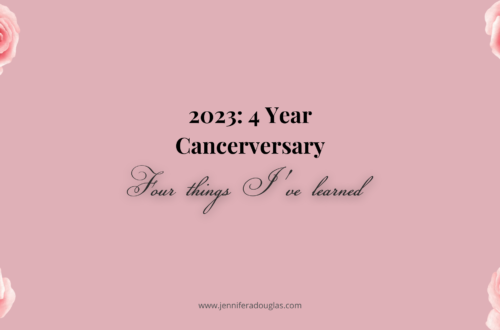
Do You Have Dense Breasts?
Are you dense? No, I’m not asking if you have difficulty thinking; I’m asking you about your breast density. Breast density is an important measurement to be aware of for several reasons. One is that mammograms are not as effective at detecting cancer in dense breasts. Another reason is that people with dense breasts have an increased risk of developing breast cancer.
How Do We Find out Our Breast Density?
So, how do we find out about our breast density? It all starts with our mammogram. The mammogram can detect our unique combination of tissue and reveal if it is more fatty or dense. This information is then factored into a four-letter scale by the radiologist to describe our breast density.
Doctors refer to tissue that isn’t fatty in our breasts as fibroglandular tissue. These tissues include lobes, lobules, and ducts, which are components of our breasts’ milk production and delivery system. Everyone has a unique combination of these tissues in their breasts. For an excellent description of the anatomy of our breasts, check out this article.

In a mammogram, the fibroglandular tissue is white, and the fatty tissue is dark. Cancer also appears white on a mammogram. In people with dense breasts, a large percentage of the mammogram shows up white which may obscure or hide breast cancer.
Breast Density Scale
Radiologists have a scale to describe breast density on a mammogram report. This scale assigns a letter to our breasts based on the combination of fatty, fibrous, and glandular (fibroglandular) tissue.
As a part of the mammogram report, the radiologist will also include a letter describing the density of your breasts. There are four categories:
- A- Mostly fatty tissues 10% of people
- B-Mostly fatty but with scattered areas of fibroglandular tissue 40% of people
- C- Heterogeneously Dense-Many areas of fibroglandular tissue 40% of people
- D-Extremely Dense-Large amounts of fibroglandular tissue 10 % of people
If you have category C or D density, you have dense breasts.
Some Important Things About Breast Density
- It is normal to have dense breasts
- Breast density isn’t associated with breast perkiness.
- You can’t figure out if your breasts are dense by squeezing them
- Younger women tend to have denser breasts than older women.
- Your breast density may change over time
- Weight gain or loss can also impact breast density.
- Certain races or ethnicities have a higher percentage of women with dense breasts
- Mammograms are not as effective in women with dense breasts.
- Your risk of developing breast cancer is higher if you have dense breasts
- Taking tamoxifen can reduce your breast density
How Do I Check if I Have Dense Breasts?
If you have had a mammogram, and have received your report, go ahead and check that report for language indicating whether or not you have dense breasts. Many states and regions have laws that require your breast density to be included on your mammogram. This might be a line that reads, “Your mammogram shows that your breast tissue is dense. Dense breast tissue is common and is not abnormal. However, dense breast tissue can make it harder to evaluate the results of your mammogram and may also be associated with an increased risk of breast cancer.” (source)
Suppose you don’t have a note in your patient letter about your breast density. In that case, you can reach out to your ordering physician and ask them to check your mammogram report for the density. It is essential to know your density because mammograms aren’t as effective at detecting cancer in dense breasts.
I have Dense Breasts. Now What?
If you have dense breasts, ask about additional screenings. Other breast imaging tools can help radiologists “see through” the dense breast tissue and identify areas of concern.
Ultrasound and Breast MRI are two of the most commonly used imagining modalities for women with dense breasts. I have had many follow-up ultrasounds after my mammograms. Some of my diagnostic mammogram appointments have moved into ultrasound follow-ups so that the radiologist can get a better picture of a particular area.
In fact, before I was 40, ultrasound was the primary imaging tool that radiologists used to identify and measure my benign fibroadenomas. I remember asking my radiologists why I wasn’t getting mammograms as well. They told me that my breasts were too dense for a mammogram to be effective because I was under 40.
Breast MRI is also highly effective in seeing abnormalities in dense breast tissue. However, it is an expensive and time-consuming screening tool that isn’t always covered by insurance. Research has shown an abbreviated MRI to be effective in detecting cancers as well. This shorter sequence drops the time required for a scan down to ten minutes from forty-five.
Additional imaging tools, such as contrast-enhanced mammography and 3-d mammography, can better identify cancer in dense breasts over traditional 2-d mammography.
Ask for Additional Screening
As informed patients, the best thing we can do is to ask about additional screenings when we read that we have dense breasts. However, if you are not offered additional imaging even after asking, I recommend seeking a second opinion.
In 2019, my screening mammogram came back with an abnormality that ended up being DCIS. When my primary care doctor called me to order the diagnostic mammogram, I also asked her to order an ultrasound. She was happy to add that to the imaging order. We can advocate for more personalized care when we know what to ask for.
There are many excellent websites and organizations that are working together to share information about dense breasts so that we can be educated and empowered. I highly recommend that you check out the resources below for more details. When we know we have dense breasts, we can be aware that mammography alone is not enough to screen for cancer.
A special thank you to My Density Matters for organizing and providing such excellent resources for this day of advocacy and information.
Please note: I am not a medical professional. Please consult your medical team for your needs and understand my disclaimer.
Resources and References
- My Density Matters: https://mydensitymatters.org
- Find out My Breast Density Day: https://mydensitymatters.org/events/fombdd-2022-02-22/
- Dense Breast Info : https://densebreast-info.org
- Patient resources: https://densebreast-info.org/for-patients/resources-for-patients/
- Are you Dense : https://www.areyoudense.org
- Dense Breasts Canada: https://densebreastscanada.ca
- Answers to commonly asked questions about dense breasts : https://www.cancer.gov/types/breast/breast-changes/dense-breasts
- What it means to have dense breasts :https://www.mayoclinic.org/tests-procedures/mammogram/in-depth/dense-breast-tissue/art-20123968
- Information about Dense Breasts :https://www.breastcancer.org/risk/factors/dense_breasts
- Exploring the Relationship Between Mammographic Breast Density and Breast Cancer https://dceg.cancer.gov/news-events/news/2017/breast-density
- Breast density, benign breast disease, and risk of breast cancer over time, https://pubmed.ncbi.nlm.nih.gov/33409776/
- Adding Ultrasound or Tomosynthesis to Screening Mammography for Dense Breast Tissue, https://breast360.org/news/2016/05/14/ultrasound-tomosynthesis-dense-breast-tissue/
- Adjunct Screening With Tomosynthesis or Ultrasound in Women With Mammography-Negative Dense Breasts: Interim Report of a Prospective Comparative Trial, https://ascopubs.org/doi/10.1200/JCO.2015.63.4147?url_ver=Z39.88-2003&rfr_id=ori:rid:crossref.org&rfr_dat=cr_pub%20%200pubmed
- Mammographic Density and Risk of Second Breast Cancer after Ductal Carcinoma In situ, https://aacrjournals.org/cebp/article/19/10/2488/67870/Mammographic-Density-and-Risk-of-Second-Breast
- New Approach to Breast Screening Based on Breast Density at 40, https://www.medscape.com/viewarticle/945472
- How breast density affects cancer risk, https://www.ucihealth.org/blog/2019/10/breast-density
- ‘Dense Breasts’ Eclipse All Other Known Breast Cancer Risk Factors, https://www.ucsf.edu/news/2017/02/405711/dense-breasts-eclipse-all-other-known-breast-cancer-risk-factors
- Breast Density on a Mammogram, https://www.komen.org/breast-cancer/risk-factor/breast-tissue-density/
- Supplemental MRI Screening May Benefit Women With Extremely Dense Breasts, https://www.breastcancer.org/research-news/supplemental-mri-benefits-extremely-dense-breasts
- Fast Breast MRI Seems to Find More Cancers in Dense Breasts Than 3D Mammogram, https://www.breastcancer.org/research-news/fast-mri-better-than-3d-mammo-for-dense-breasts
- The Role of Ultrasound in Screening Dense Breasts—A Review of the Literature and Practical Solutions for Implementation, https://www.ncbi.nlm.nih.gov/pmc/articles/PMC5872003/
- You Get What You Pay For: Breast MRI Screening of Women With Dense Breasts Is Cost-effective, https://www.ncbi.nlm.nih.gov/pmc/articles/PMC8562968/
- Breast Screening Modalities, https://densebreast-info.org/screening-technologies/
Jennifer Douglas
Jennifer is the author of "A Breast Cancer Journey: Living it One Step at a Time," breast cancer survivor, and patient advocate. Her book, published in 2023 by Bold Story Press, is an encouraging guide for breast cancer patients. It contains first-hand information, organized by topics, to help readers navigate the diagnosis, treatment, and recovery from breast cancer. Her writing emphasizes emotional, mental, and physical well-being along with empowered decision-making.


You May Also Like

2023: My Four-year Cancerversary. 4 Things I’ve Learned
September 26, 2023
Scanxiety Over My One-Year Imaging
December 15, 2020
